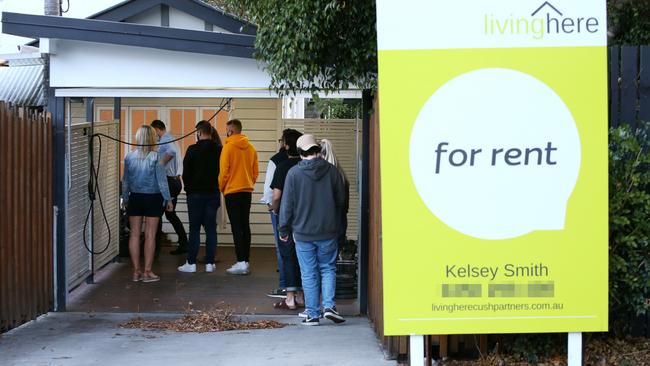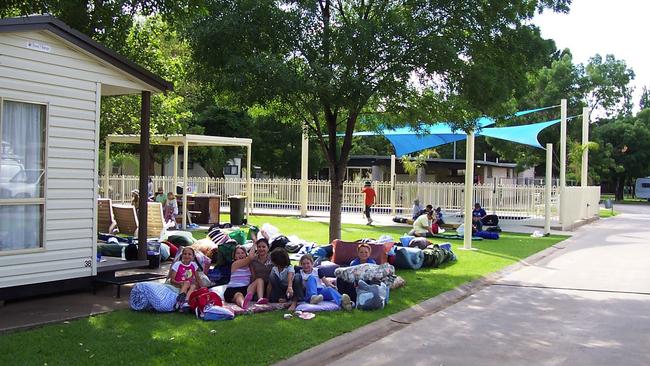Mildura renters struggle with near 0 per cent vacancy rate
With a vacancy rate of nearly 0 per cent, the rental market in Mildura has become so tough some families are being forced to consider living in sharehouses, tents, caravan parks and even their cars.

Mildura
Don't miss out on the headlines from Mildura. Followed categories will be added to My News.
Families in the state’s far northwest are being forced to consider living in tents, caravan parks, share houses and even their cars as Mildura’s vacancy rate nears 0 per cent.
Others have resorted to share houses or sleeping in their cars.
“I don’t know what else to do,” a mother of two staying in a caravan park in Mildura told the Herald Sun on the condition of anonymity.
“I have applied for so many houses I have lost count. I am thankful to be staying here, because the alternative is sleeping in our car.”
“It’s a joke. Me and the kids are staying at Mum’s house because every application we send through gets rejected. I have applied for over 100 in the last few months, no joke!” another person said.

A quick glance at rental vacancy percentages across the nation shows despite a marginal uptick in the latest figures, Australia’s rental vacancy rate stands at an astonishingly low 1.1 per cent.
Mildura renters are feeling the squeeze, as the town sits below the national average with a vacancy rate of just 0.8 per cent as of April 2023.
Homelessness has become more and more prevalent as a result.
Haven Home Safe (HHS), an organisation that provides housing and homelessness services across Victoria, said the competitive rental market in Mildura was definitely a contributing factor to a surge in people using their services in the area.
“We continued to see a demand for our services and support which is influenced by the cost of living, lack of housing supply and competitive rental market,” HHS chief executive Trudi Ray said.

Professionals Mildura managing director Tony Roccisano said he had profound sympathy for those trying to navigate the rental market in the riverside town.
“I do feel sorry for renters. Number one (rentals) are hard to obtain because of lack of supply, and number two, the price to rent is rising all the time,” he said.
Mr Roccisano blamed strict tenancy laws for the rental vacancy rates.
“A lot of landlords are exiting the market, because tenancy laws just aren’t favourable anymore,” he said.
“And the people that are buying are either owner/occupiers or Airbnb so a lot of stock is going off the market.
“(As far as the rental vacancy rate goes), it is nearly 0 per cent. When a tenant gives 28 days notice, we have up to ten people waiting to grab that property. 0.8 per cent sounds about right, but it is pretty close to 0 per cent.”
And when houses do become available, the soaring cost of rent has become prohibitive for many looking to enter the rental market.
The median rent for a three-bedroom house in Mildura was $330 per week in June of 2020.
In three short years that has ballooned to $420 per week, according to realestate.com.au.
There have been 85 houses listed on the property website in the past month, with 720 renters seriously looking for homes.
“It is definitely supply and demand. The government should take a look at how high rents are driving inflation too,” Mr Roccisano told us.
For their part, the state government hopes first homeowner grants and various social and affordable housing projects will alleviate the market in places like Mildura.
“We’re delivering the largest single investment in social and affordable housing in Australia’s history though our $5.3bn Big Housing Build,” a Victorian Government spokesperson said.
“This includes a minimum investment guarantee of $40m for the Mildura local government area, where we’ve already built 105 new homes, to increase the supply of social and affordable housing to assist people experiencing homelessness.
“The bold planning reforms we announced as part of the Housing Statement will clear the backlog of decisions and streamline the delivery of significant development, increasing the supply of homes and giving industry greater certainty with a planning system that works for Victorians.”




